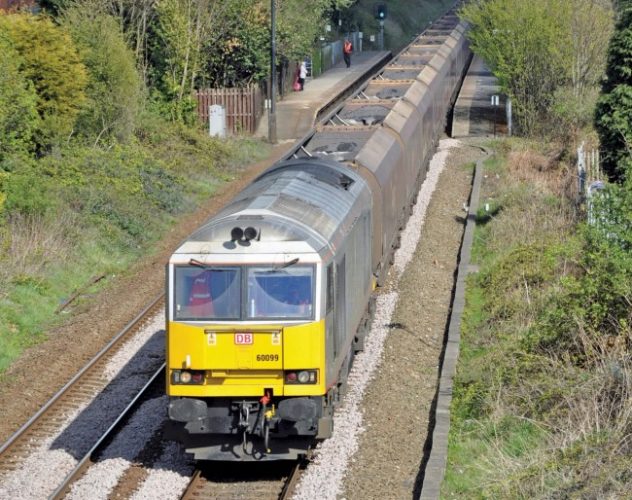By Doug Birmingham
Amberley Press
£14.99
Reviewed by Joe Coventry
If a picture paints a 1000 words, this book is for you; but don’t neglect the small print under every image to enable a largely unseen or unlooked-for world to come to life before your eyes.
For example, the front cover image and it’s associated text gives an inkling of what to expect. In silver livery No 60099 approaches Roper’s Bridge Whiston, with a diverted 6F78 the 11.30 Fiddler’s Ferry Power Station to Liverpool Bulk Terminal empty HTA hoppers. In the background is the author’s local station, Whiston, which was built and opened in 1990. 16 April 2016.
Doug Birmingham has chosen the last 20 years as the timescale to show off his photographs of many of the types of running (or not) trains in the Merseyside rail system. From steam locomotives to diesel, hybrid units to full electromotive power, this history of the types of traction used builds up in no chronological order but is shaped rather around locations of significance for the author that have been captured on film.
There is a lot to take in here once you realise that there are seven Train Operating Companies and not just the Mersey Rail yellow liveried 507/508 750 volt 3rd rail powered EMU’S out there as well as three Freight Operating Companies on the system, but as the network has expanded or contracted over time, the archive records the passing or introduction not only of trains but line closures or extensions and the demise or upgrade of the very infrastructure of the network itself.
Getting to grips with a lot of terminology used could be confusing if the reader is not a train anorak. As the text draws you in things become clearer; so each traction unit has a unique Reporting Number eg. 1Z92, and runs on it’s own diagram or is stabled when not operative; with no livery on the motive power is classed as being decaled and bears a sticker to that effect with all its vital statistics on; or a unit can be running dead in tow or on an emergency VSPT or carrying a single line token. Then there are the Orange Men. The text contains answers to all these and more but Birmingham is sparing in providing obvious answers straight away.
I found the best way to read this book was to digest a few pages at each sitting and discover not just the different classes of traction units, run by entities like Freightliner, DB Shenkar, COLAS, EWS or DRS (initials are no disincentive to those in the know). There are also the plethora of trucks and materials being carried as freight on them. Or perhaps the different Electromotive Unit people movers will bring the minutiae in each image to life.
Enter the world of Up Lines, Down Lines, stations, bridges, viaducts, signal boxes, signals, cuttings, tunnels, disused lines; then autoballasters, JHA/JMA Hoppers, VGA/JXA Vans, PFA Flat Waggons and what they carry (or carried), from where they set out to where they ended up. Discover also that the classic 142 Pacemaker, the bane of many a sore back, was designed on British Leyland’s national bus template but was deemed a great success.
The capturing of these images has been very dear to the author’s heart as is evidenced by his commitment to detail. Facts like the Royal Train stabling overnight on a disused platform at Hooton, biomass usurping coal as the main import at Bootle Docks, Olive Mount Cutting on the entrance to Lime Street Station being two miles long, that the original Roper’s sandstone bridge on George Stephenson’s 1830 world first, intercity commuter line is still extant, but not the the famous 150th Celebratory 77 Step Footbridge over the tracks at Rainhill.
This book becomes a fascinating read the more times it is opened. The first time it seemed a daunting prospect but it is now becoming an old friend. Find out for yourself.
